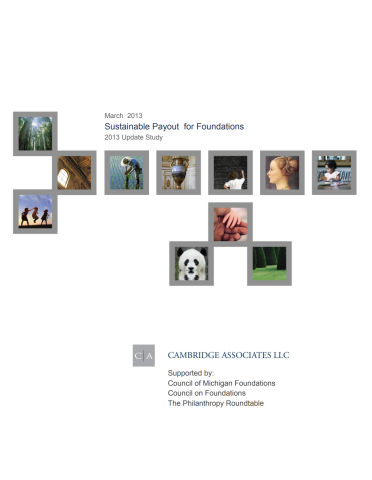The Council of Michigan Foundations (CMF) retained Cambridge Associates in 2000 to evaluate the private foundation payout rate required by the federal government based on the real returns of a group of 48 Michigan private foundations over a 25-year period, 1973 through 1997, given the market volatility of that period. CMF asked Cambridge Associates to update the study in 2004, 2013 and again in 2016 – now covering a 42-year period.
Three approaches were taken to answer the question of how much a fund can spend without depleting its real value over time. The real returns for the Michigan sample over the 42-year period were compared to both a 65 percent stock/35 percent bond model portfolio, and a 75 percent stock/25 percent bond model portfolio. In addition, the aggregate average return data for more than 30,000 private foundations, available in the Internal Revenue Service (IRS) database starting in 1986, was added through 2010.
The average annualized return, adjusted for inflation, for the sample foundations for the period 1973-2015 is 5.28 percent, only slightly above the IRS mandated payout rate of 5 percent. The return experience of the Michigan sample is consistent with that of aggregate private foundations data added in 1986. The data also suggest that foundations as a whole have been willing to spend in excess of the federally-funded mandated 5 percent during the time period, highlighting that many foundations consider the 5 percent legal required payout a minimum when establishing spending practices.
Foundations’ real wealth is a function of three variables: nominal investment returns, inflation and the required payout – the only element of relative certainty. While nominal returns of foundations have been adequate, the data suggests that the combination of inflation and mandated annual payouts may erode foundations’ real wealth over time. Updated simulations using hypothetical portfolio data from 1969 to 2014 confirm that a 5 percent payout rate makes the goal of maintaining purchasing power in perpetuity challenging. The actual return of the sample of Michigan foundations does not support a spending rate higher than 5 percent.


